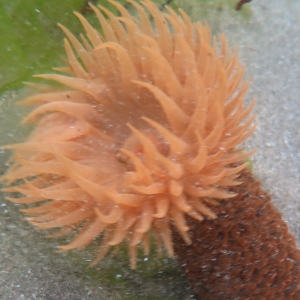 Where
Where
The wandering anemone — Phlyctenactis tuberculosa (Quoy & Gaimard, 1833) is also found in southern Australia and Chile. Wandering anemones live amongst seaweeds (Carpopyllum) at and below low tide on exposed coasts. They have also have been recorded down to depths of ~30 m off Otago.
Identifying features
The largest intertidal anemone (~200 mm in length) you are likely to encounter around New Zealand’s coastline. They are higher than wide with a long stalk. The stalk is quite distinctive and is covered with lumpy tubercles. There can be many colours, but frequently have a brown or grey stalk, and yellow or orange tentacles.
Similar to
Of a comparable size to the giant shore anemone, but that species is much wider than it is high. Lives in similar habitat to the brooding anemone, but that species is considerably smaller.
Ecology
They are called wandering anemones because they move around; they have the ability to readily detect and seek new habitat, so you can find them living on seaweed or rocks.If you pick one up, the base is very sticky. Some of the pictures below are of a wandering anemone “wandering”. These pictures come from amongst rocks around the side of Mt. Maunganui.
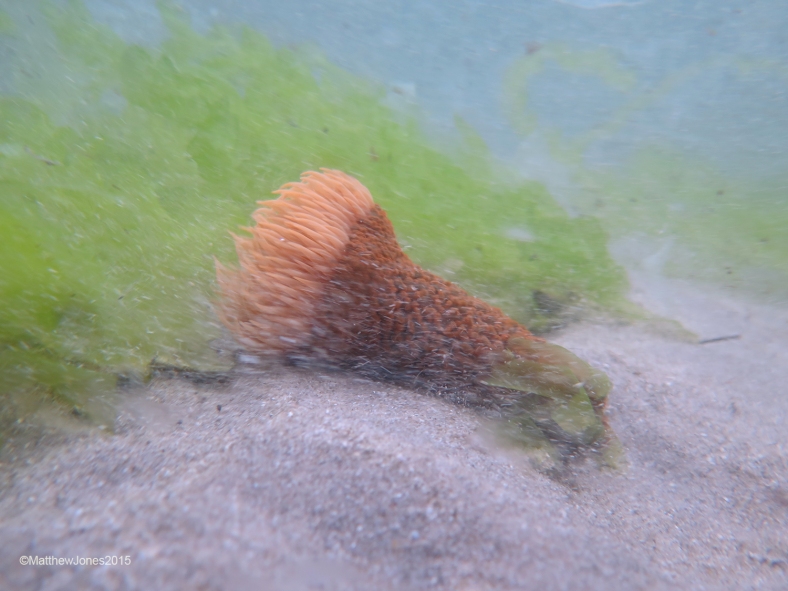
This is what you tend to see, the anemone being washed around by the wave swash. Mt. Maunganui, October 2015.
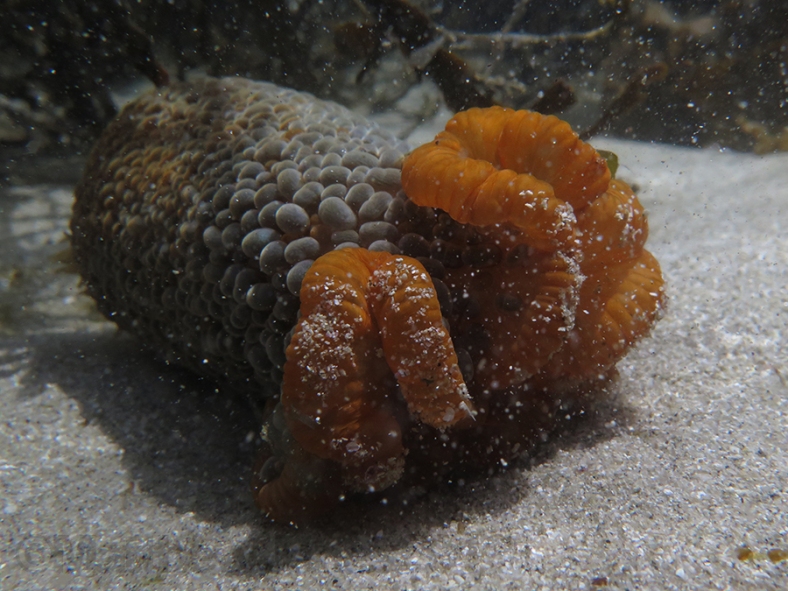
The is the sticky base of a wandering anemone. You can see the sand that’s attached. This one was seen among rocks at the base of Mt. Maunganui in November 2016.
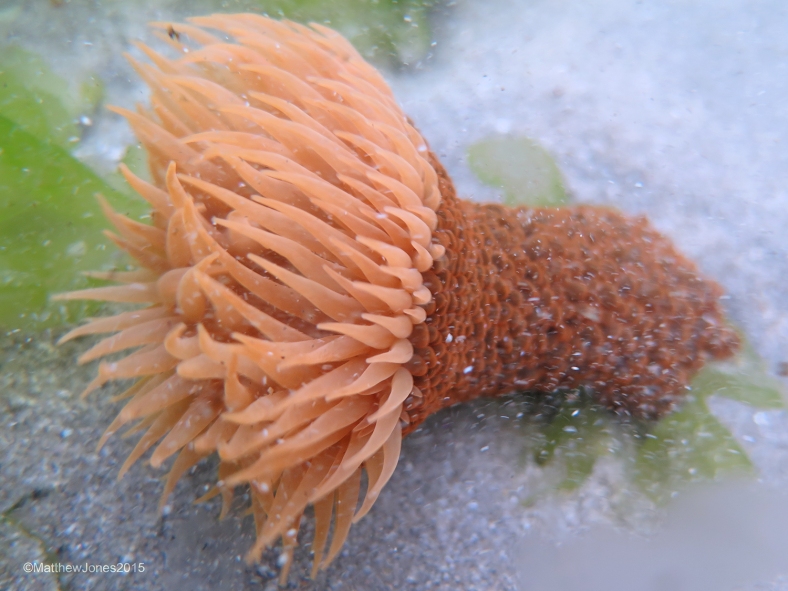
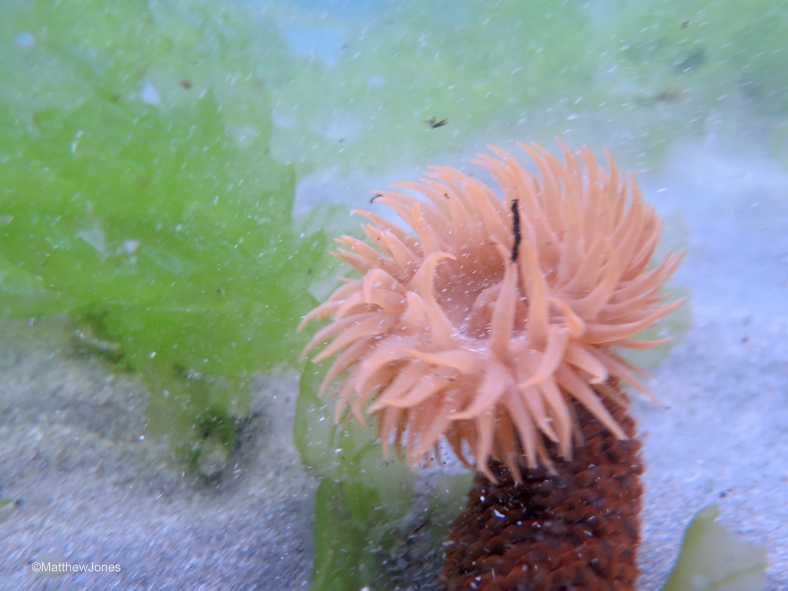
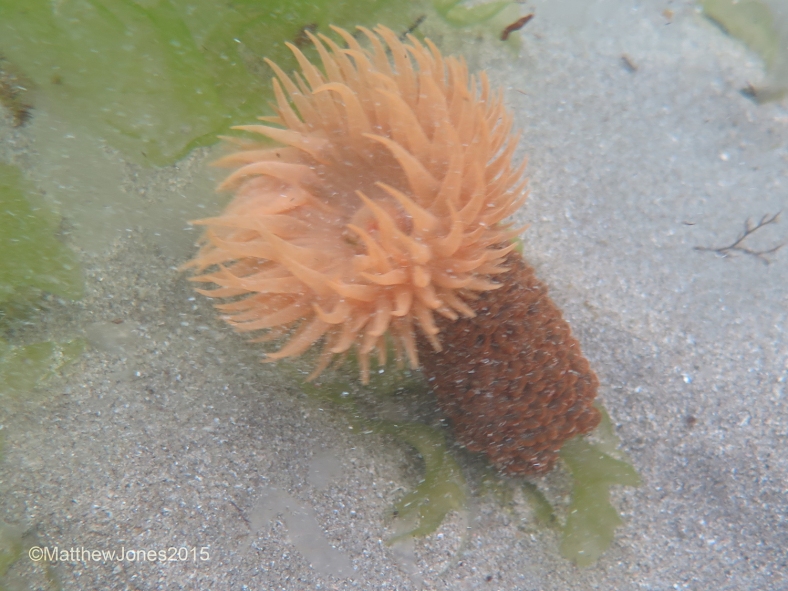
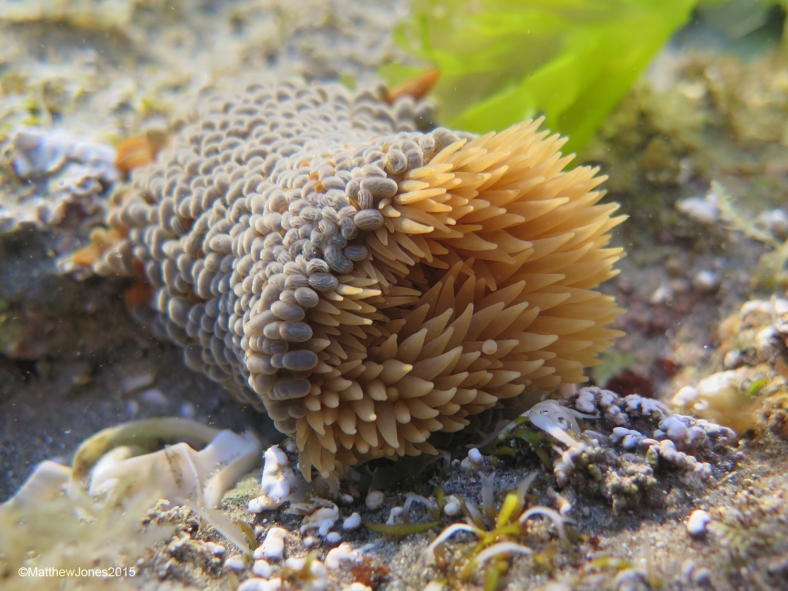
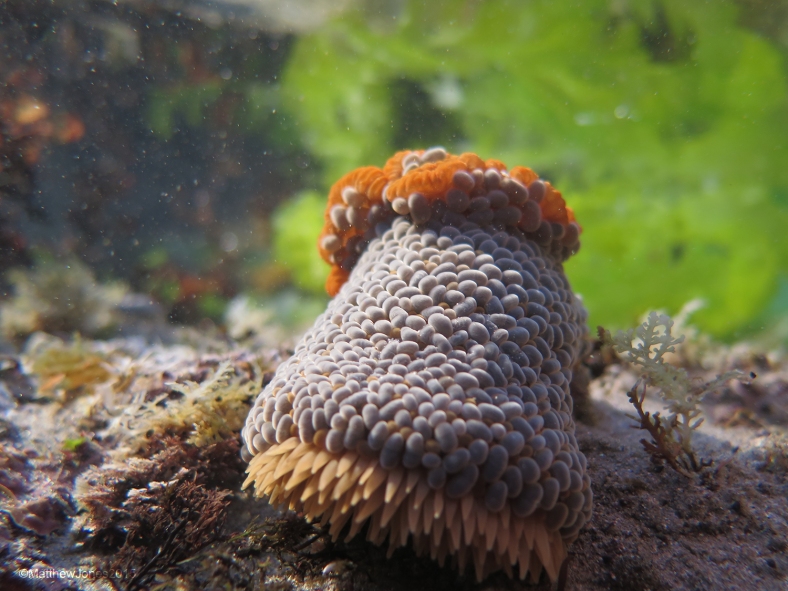
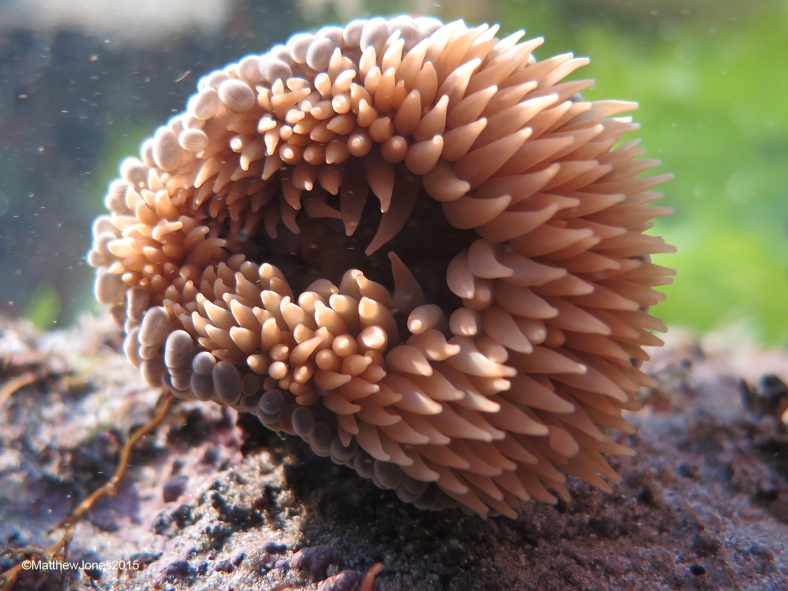
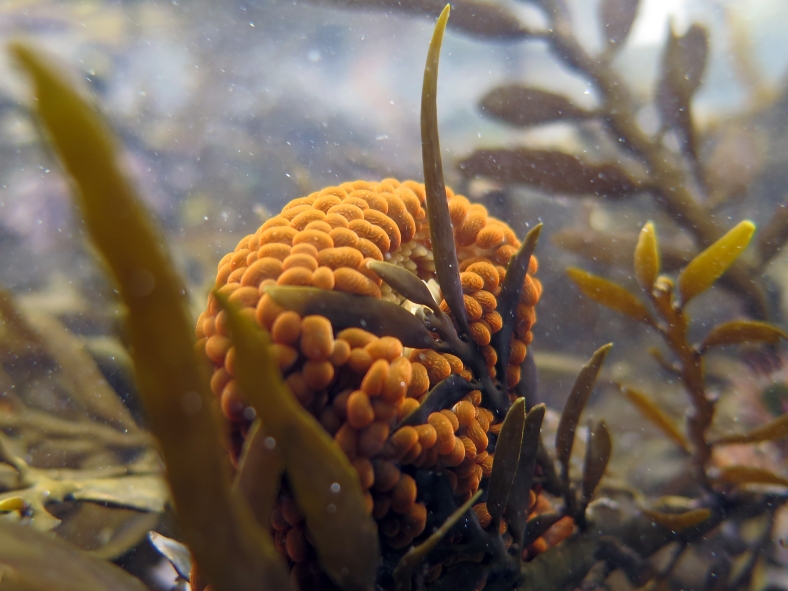
2 thoughts on “Wandering anemone — Phlyctenactis tuberculosa”